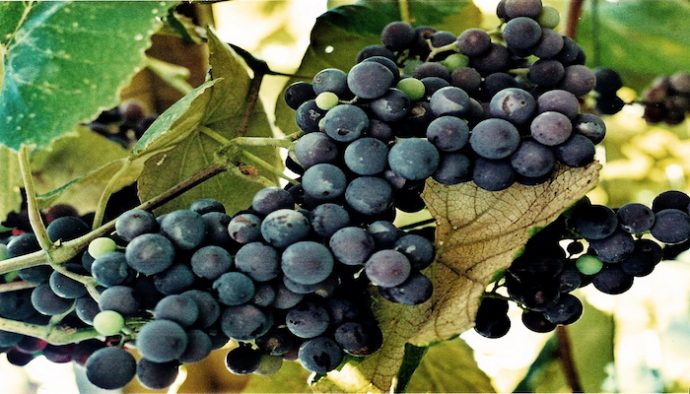“I am the vine and you are the branches. He who abides in Me and I him Him will produce much fruit, for apart from me you can do nothing” (John 15:5).
These words of Jesus, like everything He said, are important. In this simple verse, Jesus boils down what life in Him is like: it’s abiding. Some translations call it remaining. The image Jesus uses is of a branch connected to a vine. Apart from that connection, a branch is a stick; it’s useless for anything except kindling. But when that branch is locked into the vine, it finds its life and nutrients flowing into it.
Similarly, when we remain in Jesus, we will find our very life found in Him. But that leaves us with a question, doesn’t it? What does it mean to abide? What does it look like?
Fortunately for us, the Book of John doesn’t doesn’t contain the command to abide in Jesus; it gives us a picture, way back in chapter 1. Jesus was a relatively new figure on the religious landscape. There were rumors surrounding Him – His birth, His teaching, His power – but by far, the big draw was still John the Baptist. John, with his wild beard and locust-popping habits. John, the fearless who called the Pharisees to task. John, the eccentric.
But John had caused a different kind of ripple. The previous day, Jesus had approached the Jordan River. John stopped what he was doing to make a mysterious but powerful declaration: “Behold! the Lamb of God who takes away the sin of the world!” It left his disciples wondering.
Then, when the same thing happened the next day, two of those disciples wanted to inquire further:
“Again the next day, John was standing with two of his disciples. When he saw Jesus passing by, he said, ‘Look! The Lamb of God!’ The two disciples heard him say this and followed Jesus. When Jesus turned and noticed them following Him, He asked them, ‘What are you looking for?’” (John 1:35-38).
Valid question. Here were two men who were followers of John. Jesus comes walking up, and suddenly he’s got two hangers-on. So what were they looking for?
Their answer seems to say, “We don’t know,” for at first glance the didn’t even give an answer. They turn to each other. Then, instead of answering the question, they ask another question to Jesus: “Teacher, where are you staying?”
Another good question. It’s not because it redirected the question of Jesus, buying them some time to think of a better answer. It’s a good one because of the word “staying.”
The word is the same word we find in John 15:4-5, this time spoken by Jesus: “Abide in Me, and I in you. Just as a branch is unable to produce fruit by itself unless it abides on the vine, so neither can you unless you abide in Me.”
That’s what the men asked: “Where are You abiding?” Where are You remaining? Where are You dwelling? Where are You going to be, because that’s where we want to go. To be with You. To remain with You. To abide with You.”
With that picture in mind, I want to offer three characteristics of what it means to abide:
1. Abiding begins with a glimpse of Jesus.
These early disciples didn’t know the ins and outs of who Jesus is; they had an inkling, but they were a long way from being able to fully understand and articulate the gospel. Maybe that’s why they answered Jesus with a questions when He asked them what they were looking for. The two guys looked at each other, shrugged their shoulders, and asked another question as if to say, “Truth is Jesus, we don’t exactly know. But we know that You’re different. You’re unique. And wherever You’re going, we want to go there, too.” This is how it begins for all of us.
We catch a glimpse of Jesus. Maybe we’ve got some theological background. Maybe we know better answers than these two. Regardless, abiding in Jesus begins not when we learn about Him, but when we actually encounter Him, and we find ourselves so arrested by that vision that we know we need more. Abiding starts with a glimpse of Jesus, but it doesn’t end there.
2. Abiding is an intentional choice.
Nobody accidentally abides in Jesus. These men didn’t. Even though they didn’t know what they were looking for precisely, they made the intentional choice to go and be with Him. In fact, they spent so much time with Him that much of the day just slipped away from them. This morning, like every morning, we will have to bring some intentionality to our Christian walk. We aren’t going to stumble into abiding; we’ve got to make the intentional choice to meet Jesus where He is. We’ve got to open the Bible. We’ve got to pray. We’ve got to reflect. And in each case, and on each day, we’ve got to choose to do it over and over again.
3. Abiding is driven by faith.
Sometimes the faith is small, but in each case, we catch a glimpse of Jesus. We make an intentional choice to be with Him. And then we find ourselves choosing to do again and again out of faith.
Let’s not make the mistake of thinking that abiding in Jesus is purely an act of the will; it’s not. It’s driven forward by faith. There will be those times when you don’t feel like abiding. You’re too tired. You have too much to do. Something else seems more important. What we must do in those times is more than act; we must believe. We must believe that Jesus will meet with us. We must believe that the Bible is the Word of God. We must believe it’s true, and then let our actions follow.
May it be so for us today. And tomorrow again.
Subscribe to MichaelKelley.co
Never miss a new post. Subscribe to receive these posts in your inbox and to receive information about new discipleship resources.




